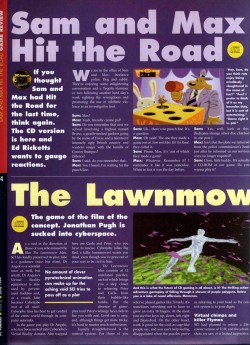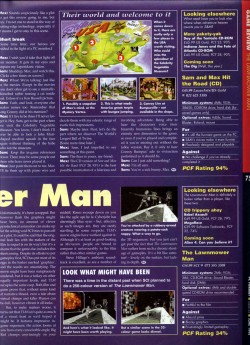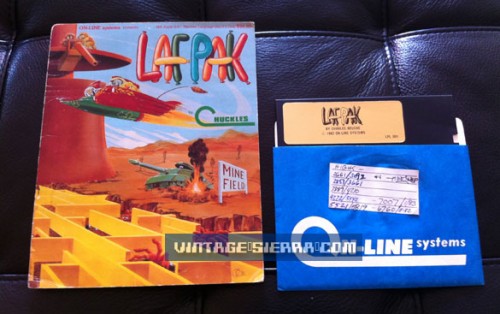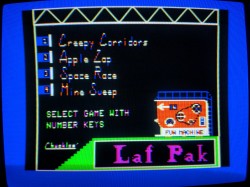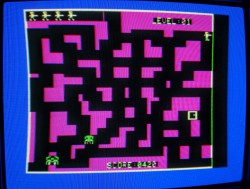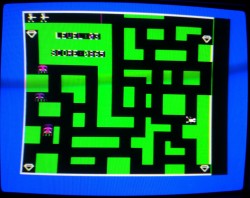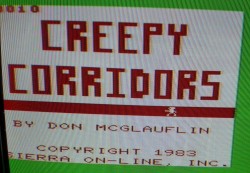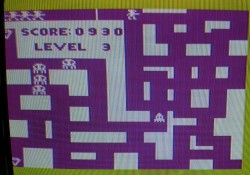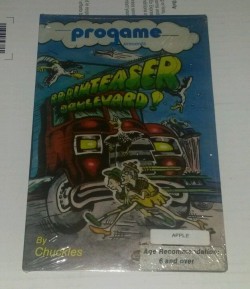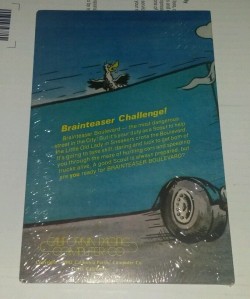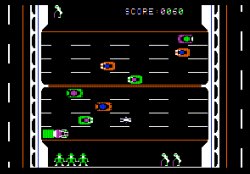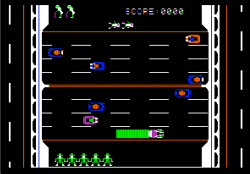I decided it was time to indulge my guilty pleasure for FMV games and picked The Lawnmower Man for my next game. This was one of those games that I can’t say I especially wanted to own but since it came with a bundle of others + I already had the sequel, it got added to the collection.
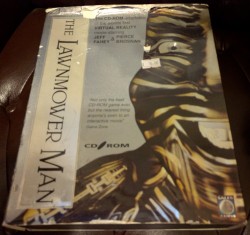
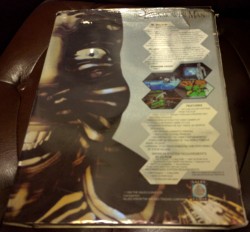
The box is a giant metallic silver monstrosity with a grinning Cyberjobe on the front. Mine is in a sorry state, no doubt due to having hung around bargain bins for several years before being snapped up by some poor fool at the £10.00 sticker price. When first released in 1993, the retail price was a whopping £54.99 (somewhere around US$100).

The inside of that sizable box isn’t exactly stuffed full of goodies with a single CD and a reasonably substantial manual. The manual has an introduction from the producer of the forthcoming Lawnmower Man 2 movie saying how the second film was going to be produced to take advantage of assets from the game whatever that means. I vaguely recall seeing that film many years back. It’s not an experience I intend to repeat but I do recall it picking up from the events of these games instead of straight after the first movie.
Speaking of which, I ought to briefly mention the first Lawnmower man movie which was allegedly based on a Stephen King story but didn’t bear much resemblance in reality. The film tells the tale of an intellectually challenged man called Jobe who makes his way in the world by mowing lawns. Through the powers of a pre-Bond Pierce Brosnan and his virtual reality lab, Jobe is made super intelligent before ultimately becoming evil and loading himself into cyberspace at the end of the film to become an all-powerful virtual being and set up the sequel. The film was the first I can think of to feature VR so heavily with impressive CGI graphics for the time. That was definitely it’s selling point, the rest of the film was nothing special.
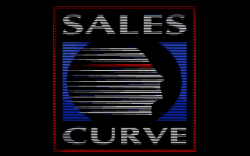
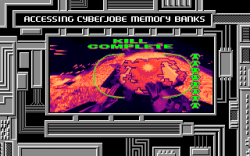
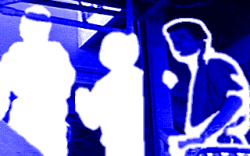
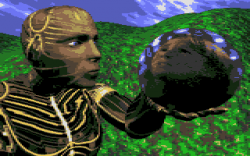
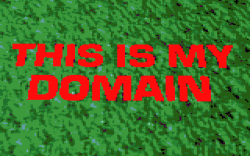
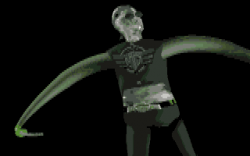
The game picks up straight after the film ends. There is a lengthy FMV intro in which using his new-found powers Cyberjobe somehow zaps Dr Angelo (Brosnan) and colleagues into Cyberspace. Playing Dr. Angelo, you have to make your way through Cyberspace picking up as many spiky balls as possible to rescue both colleagues and then escape yourself. To make that more difficult, Cyberjobe also brings along several villainous characters from the movie morphing their characters so that they do his bidding trying to stop you. For some reason he takes the form of a lawnmower himself so that he can mow a message into his cyberlawn…
When you eventually get to the game, it’s mostly Dragon’s Lair inspired where you have to press the appropriate direction or fire at the right time. I do have to say that Dragon’s Lair looked a whole lot better than this even if it did come out a decade earlier. The underlying CGI isn’t bad by 1993 standards but the compression is terrible. The pixels are at least as large as in The Black Cauldron and it doesn’t have the greatest frame rate either. The thumbnail images here make it look far, far better than it does on a full screen. It’s bad enough to be difficult to see what is going on at times.
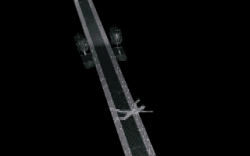
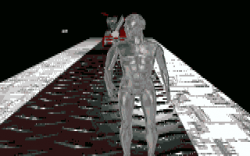
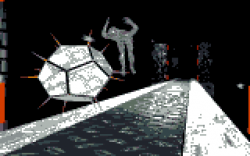
There are 12 subgames many of which have to be completed numerous times in progressively harder forms. I’ll look at a few of them here but not all as the game really doesn’t warrant a post that long. The first involves running along the information superhighway (it was a lot less busy in 1993) while Cyberjobe in lawnmower form chases along behind you. The player has to jump over the spiky balls and duck under the enemies who somehow float around above the road. In short press up or down at the right time. The correct key can just be held down with no timing required meaning these sections are nice and easy. This section has to be completed 5 times in all with later versions involving several trips along the highway and linking platform sections where the player has to carefully time jumps onto moving pads.
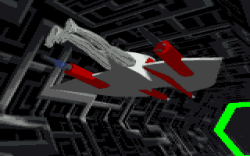
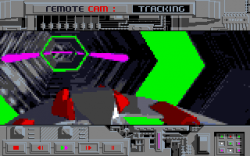
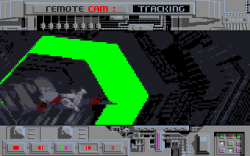
Another section you’ll be seeing 5 times is the Cyberboogie where the player has to navigate twisty passages, all alike, in their flying contraption. This is easily the most successful section but also the most difficult. It can be played as a straight arcade game without learning the route if you can react quickly enough but learning the route is recommended as it will be the same every playthrough. Later levels introduce balls to be shot by the player on the way through and barriers that shoot out of the walls at the last moment – you have to be extremely quick with these or know they are coming.
I particularly like the music in this section. All the music was composed by Steve Hillage who has a long history in the music industry going back to the 1970’s. The soundtrack is a mix of electronic and guitar and it’s easily the best part of the game fitting perfectly to the theme.
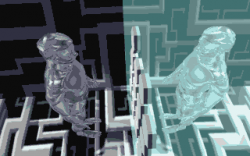
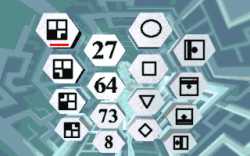
Many of the other sections are more puzzle than arcade. There are security doors full of IQ style tests. I.e. in the one above, 73 is the only number that isn’t a cube + the underlined picture is the only one that isn’t a rotated version of the others. Most of these are easy, some have several potential solutions and you just have to learn what is expected through trial and error. You have to get all four right to progress but get 3 chances before losing the game.
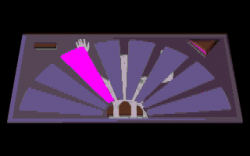
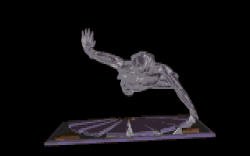
The puzzle above is Simon. It’s ridiculously simple and tedious which is confounded by the fact that having selected your sequence you have to watch slow animations play where your character presses each button at the rate of about one press every 10 seconds.
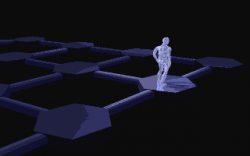
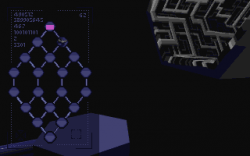
There is another section where you have to navigate around a series of pads taking turns with an invisible protagonist that starts at the opposite end. If you both end up on the same pad at once you lose. Since he can see me, my opponent could guarantee a win if he just moved back and forth from the starting pad. In practice the same route works every time so it’s just a case of figuring that route out.
I’m sure this puzzle was stolen from an old British TV series called The Adventure Game in which minor celebrities would be dumped in “outer space” and have to solve puzzles to get home again. If any of them made it to the end of the show, they had to outwit a talking pot plant to get across an identical board to the one in this puzzle.
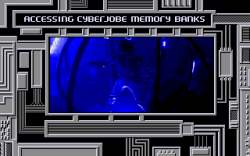
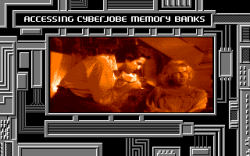
After completing each level, the player is rewarded with snippets from the film in super grainy mono vision.
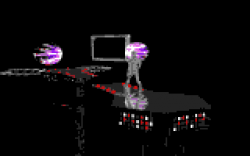
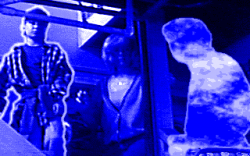
I will give the Lawnmower Man credit for presenting a challenge to the player. One of the reasons I chose this game was that I didn’t have much time and figured an FMV game on a single CD ought to be quick and easy to complete. You can’t fit that much video on the one disc after all. Finishing this was anything but easy involving many, many attempts where I would gradually learn the required moves. There is no saving and only 2 continues so there was a lot of starting from the beginning but I would get further each time.
Eventually, there is a final jumping section and I rescue my second colleague before the end cutscene springs into life.
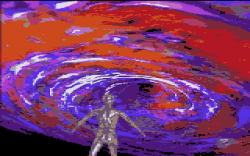
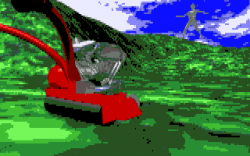
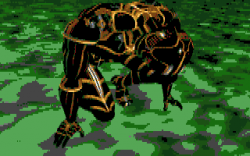
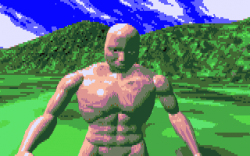
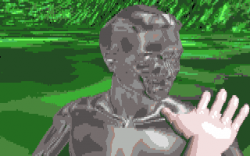
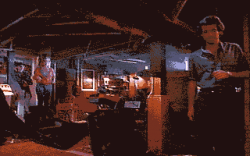
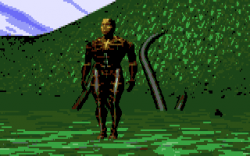

Dr. Angelo is sucked through a vortex to meet up with Cyberjobe face to face. Despite spending the last hour trying to kill you, he has a change of heart, regains his humanity and sends the Doctor back to the real world. Mysterious tentacles then spring out of the ground surrounding Cyberjobe and before we can find out what they are or where they came from there is a to be continued. The sequel Cyberwar came out the following year and would answer neither of these questions. It will probably be getting a playthrough at some point but defeating this first entry was quite enough for the moment.
The Lawnmower Man is certainly a strange game and could only have come out in a very specific period of time. There is no plot to speak of – it’s more like a surrealistic repetitive nightmare in which the player is constantly under threat of death by lawnmower. I can’t say there wasn’t some fun to be had. It does have that arcade quality of always getting slightly further as you learn what to do. This did get frustrating nearer the end – completing the game must have taken at least 40 minutes even skipping cutscenes. That is a lot of replaying if you cock it up but since most of it was variants of earlier scenes I did more or less get through the last 15 minutes on the first attempt.
The point of these early FMV games, if they had one, was to show off your expensive system and the visuals/audio it could produce. The gameplay would be limited but with the compensation of all that glorious video coming out of your computer. On those terms, Lawnmower Man succeeds in the audio department with a soundtrack that could be a classic had it been attached to another game. The visuals however are a grainy mess and miss the point entirely. It’s also massively more repetitive than it needs to be sending you round and round the same levels with slightly different camera angles and obstacle placement. I would have been seriously put out if I’d paid £55 for this at the time. If I can look past the graphics, it’s not that bad a game for what it is I suppose. I’m certainly not going to recommend this to anyone though.
I’m extremely curious to see what the press thought of it at the time and will attempt to dig out a few reviews for the next post before I start another game.

